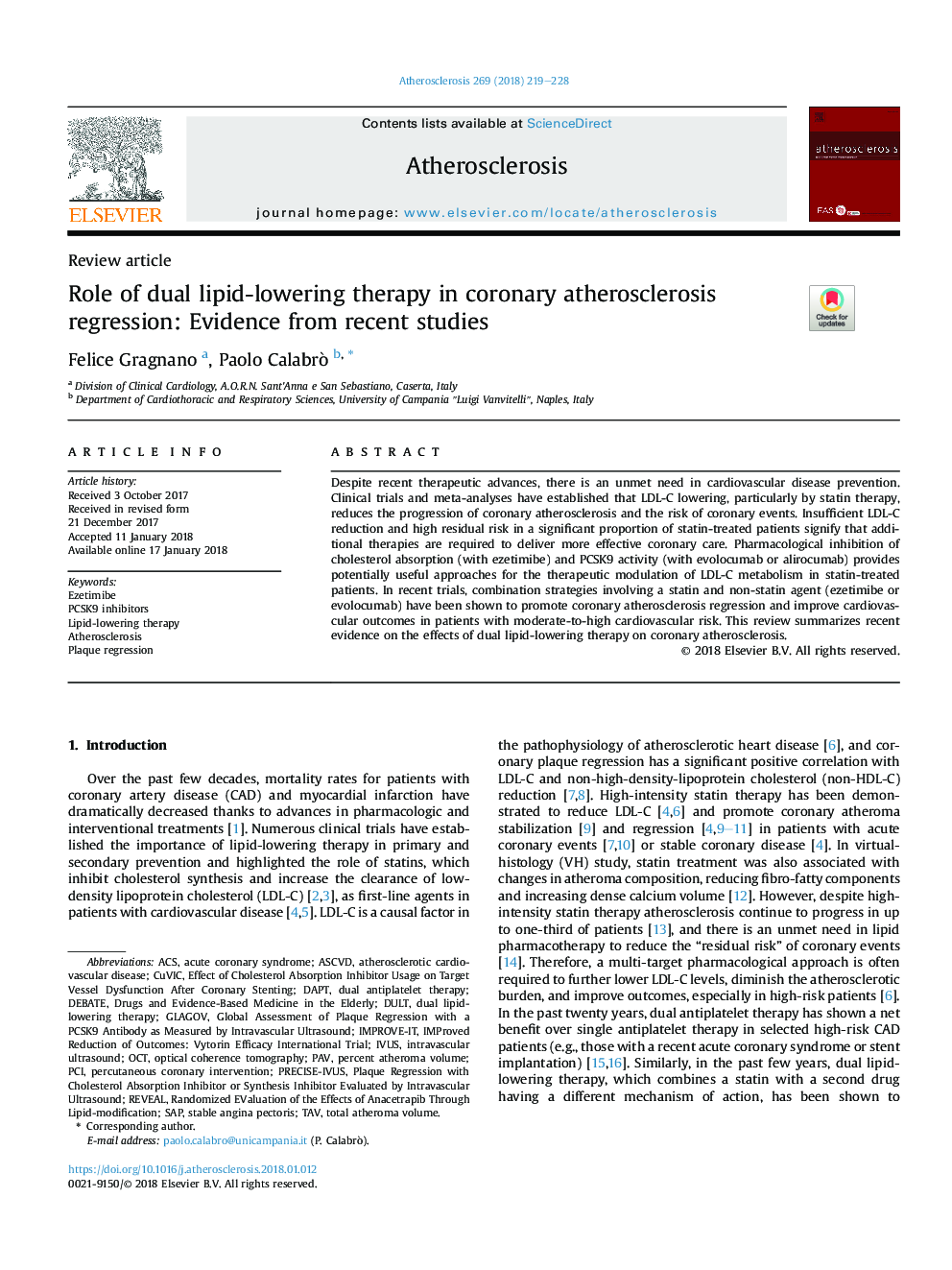| Article ID | Journal | Published Year | Pages | File Type |
|---|---|---|---|---|
| 8656986 | Atherosclerosis | 2018 | 10 Pages |
Abstract
Despite recent therapeutic advances, there is an unmet need in cardiovascular disease prevention. Clinical trials and meta-analyses have established that LDL-C lowering, particularly by statin therapy, reduces the progression of coronary atherosclerosis and the risk of coronary events. Insufficient LDL-C reduction and high residual risk in a significant proportion of statin-treated patients signify that additional therapies are required to deliver more effective coronary care. Pharmacological inhibition of cholesterol absorption (with ezetimibe) and PCSK9 activity (with evolocumab or alirocumab) provides potentially useful approaches for the therapeutic modulation of LDL-C metabolism in statin-treated patients. In recent trials, combination strategies involving a statin and non-statin agent (ezetimibe or evolocumab) have been shown to promote coronary atherosclerosis regression and improve cardiovascular outcomes in patients with moderate-to-high cardiovascular risk. This review summarizes recent evidence on the effects of dual lipid-lowering therapy on coronary atherosclerosis.
Keywords
IMPROVE-ITACSTAVPaVDAPTPCIASCVDPlaque regressionIVUSAtherosclerosisStable angina pectorisEzetimibeOctAtherosclerotic cardiovascular diseaseOptical coherence tomographydual antiplatelet therapyAcute coronary syndromeintravascular ultrasoundSAPREVEALpercutaneous coronary interventionDebatePCSK9 inhibitorsLipid-lowering therapy
Related Topics
Health Sciences
Medicine and Dentistry
Cardiology and Cardiovascular Medicine
Authors
Felice Gragnano, Paolo Calabrò,
